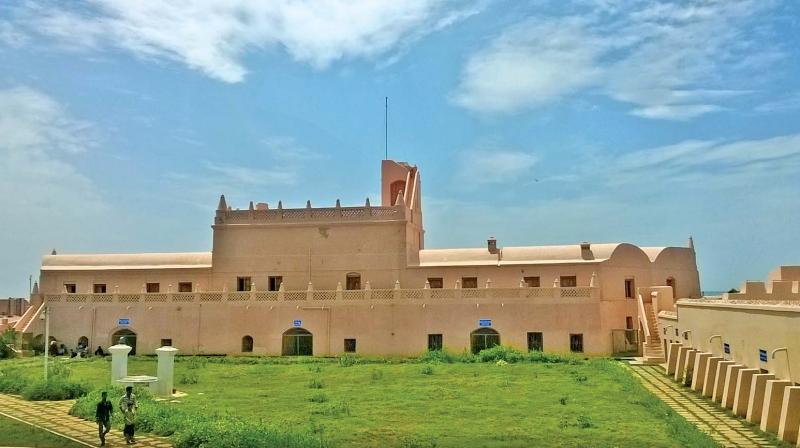Tranquebar retains its old world charm post-Tsunami

Tranquebar: The Asian Tsunami might have wrought havoc to the shores, property and human lives of Tranquebar (Tharangampadi) in December 2004.
But today, it is one of the beautiful coastal stretches in Nagapattinam district. Danish fort, which remained dilapidated, has been restored to its original beauty and amenities for tourists have been provided.
The 'Masilamaninathar temple', which stood braving the waves, has also been renovated. Coastline has been well demarcated using the granite stones, leaving intact the old brick wall that leads tourists to the dashing sea waves.
On Saturday, many tourists were seen taking bath in the sea, basking in the sun, enjoying ozone rich atmosphere, which is unique to Tranquebar, visiting the Danish fort and worshipping at the Masilamaninathar temple.
There were school students, a horse with a jockey to take children on a jolly ride along the coast, a cameraman with a polaroid camera to give the photos shot with the long sea coast, Danish fort and temple as background, quickly on the spot. He charges Rs 40 for a photo. “Now people can take a walk around the fort wall and see the sea from the fort,” say the ticket selling staff at the entrance.
Do the people remember Tsunami? With years rolling by, many students who visited this enchanting coastal spot, were not even aware of the havoc. Many were born after the Tsunami and are five to ten years old. Only one old man recalled the event and said that was a "black day" for entire Nagapattinam district.
During Tsunami, nearly 600 people were killed, sea water entered into the town to two-km, but the Danish Fort was not affected. Death toll was more during the Tsunami at Velankanni and Nagapattinam than in places like Tranquebar, Poompuhar and Sirkazhi.
The fort came into being in 1621 after the King of Denmark Christian-IV signed an agreement with Raghunatha Nayak, King of Thanjavur in 1620, by which Danes were given permission to erect a fortress (Fort Dansborg) and pay an annual rent of Rs 3,111. Till 1845, Tranquebar was a Danish trade settlement ruled by a Governor. The British took it over after 1845. They purchased the fort.
During the Danish period, the trapezoidal shaped fort had store rooms, prison and rest rooms for soldiers in the lower compartment adjoining the fort. In the second level rooms for Governors and priests existed. The fort, 200-foot long facing the sea and 36-foot wide, was renovated twice in the recent past.
Tranquebar Association with the help of Danish Royal association renovated the fort in 2001, and again it got a facelift under Destination Development Tranquebar project by Tamil Nadu Tourism department in 2011.
Portrait of Raghunatha Nayak, Tranquebar site map, pottery, portrait of Christian four, Denmark king now displayed in Museum were restored by the Archaeological department in 2001. Metal halide lamps have been installed to give green lighting.
The fort, built of bricks, has two gates one on northern side and second on eastern side. With cobble stoned pathways laid, stones laid from the fort to Masilamaninathar temple to protect the structures, Ornamental lamps installed, the coast has now become an attractive tourist destination.
Zion church built in 1701, Jerusalem church built in 1718, town gateway built in 1792, the Danish governor's bungalow (near the fort) built in 1784 and Masilamani Nathar temple built 700 years back by Maravarman Kulasekara Pandiyan and the Ziegenbalg Museum are added tourist attractions of the town.

